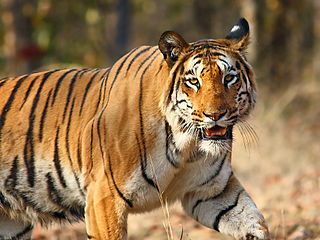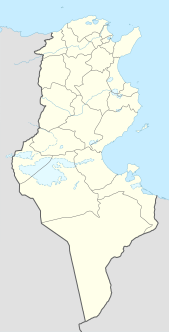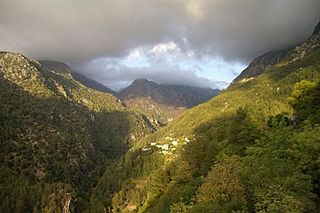
Man and the Biosphere Programme (MAB) is an intergovernmental scientific program, launched in 1971 by UNESCO, that aims to establish a scientific basis for the improvement of relationships between people and their environments.
The UNESCO World Network of Biosphere Reserves (WNBR) covers internationally designated protected areas, each known as biosphere reserves, that are meant to demonstrate a balanced relationship between people and nature. They are created under the Man and the Biosphere Programme (MAB).

A transboundary protected area (TBPA) is an ecological protected area that spans boundaries of more than one country or sub-national entity. Such areas are also known as transfrontier conservation areas (TFCAs) or peace parks.

Jabal al-Druze, officially Jabal al-Arab, is an elevated volcanic region in the As-Suwayda Governorate of southern Syria. Most of the inhabitants of this region are Druze, and there are also small Muslim and Christian communities. Safaitic inscriptions were first found in this area. The State of Jabal Druze was an autonomous area in the French Mandate for Syria and the Lebanon from 1921 to 1936. In the past, the name Jabal al-Druze was used for a different area, located in Mount Lebanon.

The Indian government has established 18 biosphere reserves to protect larger areas of natural habitat than a typical national park or animal sanctuary, and that often include one or more national parks or reserves, along with buffer zones that are open to some economic uses. Protection is granted not only to the flora and fauna of the protected region, but also to the human communities who inhabit these regions, and their ways of life.

Jebel ech Chambi is a mountain peak in Tunisia. It has an elevation of 1,544 m (5,066 ft) and is the highest mountain in the country. It stands above the city of Kasserine in western central Tunisia. The summit is covered by a pine forest and is part of Chambi National Park.

The Agasthyamala Biosphere Reserve is a biosphere reserve in India established in 2001, located in the southernmost end of the Western Ghats and includes 3,500.36 km2 (1,351.50 sq mi) of which 1828 km2 is in Kerala and 1672.36 km2 is in Tamil Nadu. It encompass the wildlife sanctuaries Shendurney Wildlife Sanctuary, Peppara Wildlife Sanctuary, Neyyar Wildlife Sanctuary, and Kalakkad Mundanthurai Tiger Reserve.

The El Kala National Park and Biosphere Reserve is one of the national parks of Algeria in the extreme north-east of the country. It is home to several lakes and a unique ecosystem in the Mediterranean basin. Several parts of the park have been designated as protected Ramsar sites.

The Belezma National Park(Arabic:الحظيرة الوطنية بلزمة) is one of the most important national parks of Algeria. It is located in Batna Province on the slopes of the Belezma Range, a subrange of the Aurès Mountains.

The United Nations Educational, Scientific and Cultural Organization (UNESCO) is a specialised agency of the United Nations (UN) aimed at promoting world peace and security through international cooperation in education, the sciences, and culture. It has 193 member states and 11 associate members, as well as partners in the non-governmental, intergovernmental, and private sector. Headquartered at the World Heritage Centre in Paris, France, UNESCO has 53 regional field offices and 199 national commissions that facilitate its global mandate.
Under UNESCO’s Man and the Biosphere Programme (MAB), there are 70 biosphere reserves recognized as part of the World Network of Biosphere Reserves in African States as of 2016. These are distributed across 28 countries. While biosphere reserves in West African, East African, Central African and Southern African countries are organised in the AfriMAB regional network, biosphere reserves in Northern African countries are organised in the ArabMAB, UNESCO's regional MAB network.
Under UNESCO's Man and Biosphere Reserve Programme, there are 142 biosphere reserves recognized as part of the World Network of Biosphere Reserves in Asia and the Pacific as of April 2016. These are distributed across 24 countries in the region.
Under UNESCO’s Man and the Biosphere Programme, there are 302 biosphere reserves recognized as part of the World Network of Biosphere Reserves in Europe and North America. These are distributed across 36 countries in the region.
Mohamed bin Issa Al Jaber is an Arab businessperson.

Chambi National Park is a national park in Tunisia's Kasserine Governorate. It protects the flora and fauna surrounding Mount Chambi, the highest mountain peak in Tunisia.

Al Reem Biosphere Reserve is an inhabited area of 120,000 hectares in northwest Qatar that includes semi-arid desert landscapes that are home to gazelles and Arabian oryx, among other wildlife. It is one of 24 UNESCO Biosphere Reserves in the Middle East. It was established in 2005 and accounts for approximately 10% of Qatar's land area. It was recognized by UNESCO in 2007.

Jabal Moussa Biosphere Reserve is a nature reserve located in the Keserwan District of Lebanon, on the shoulders of the western slopes of Mount Lebanon overlooking the Mediterranean Sea to the West. It covers an area of 6500 hectares, at an altitude ranging between 350 meters in the North-West and 1,700 meters to the South-East. Its main villages are: Yahchouch, Qehmez, Jouret el-Termos, Nahr ed Dahab, Ghbaleh, Ebreh, and Chouwan. Jabal Moussa and surrounding villages became part of the UNESCO Network of Biosphere Reserves under the Man and Biosphere (MAB) program in 2009. As part of the MAB program, JMBR addresses human livelihood improvement and nature conservation through combining natural sciences with social sciences, economics and education.
Biosphere reserves are areas comprising terrestrial, marine and coastal ecosystems. The biosphere reserve title is handed over by UNESCO. Each reserve promotes solutions reconciling the conservation of biodiversity with its sustainable use. Biosphere reserves are 'Science for Sustainability support sites' – special places for testing interdisciplinary approaches to understanding and managing changes and interactions between social and ecological systems, including conflict prevention and management of biodiversity. Biosphere reserves are nominated by national governments and remain under the sovereign jurisdiction of the states where they are located. Their status is internationally recognized.

Riding Mountain Biosphere Reserve (RMBR) is a UNESCO World Biosphere Reserve designated by the United Nations Educational, Scientific and Cultural Organization (UNESCO) in 1986 as part of its Man and the Biosphere Programme. The RMBR, which encompasses Riding Mountain National Park and twelve surrounding municipalities in the province of Manitoba, is one of 16 Biosphere Reserves in Canada. Ecologically sensitive ecosystems include the grasslands, deciduous forest and boreal forest. Although grasslands occupy only 7,400 of the total 1,331,800 hectares, they are considered of national importance since they exist as discrete units and the rare climax rough fescue community represents the eastern extent of its range. The Biosphere Reserve extends the protection of these ecosystems outside of park boundaries. Municipalities in the Riding Mountain Biosphere Reserve include Clanwilliam – Erickson, Dauphin, Gilbert Plains, Grandview, Harrison Park, Lakeshore, McCreary, Rosedale, St. Rose, Riding Mountain West, Rossburn, and Yellowhead. First Nations in the Biosphere Reserve include Rolling River First Nation, Keeseekoowenin First Nation, Waywayseecappo First Nation, and Tootinaowaziibeeng First Nation. Asessippi Provincial Park and Duck Mountain Provincial Forest also border the Biosphere Reserve.































